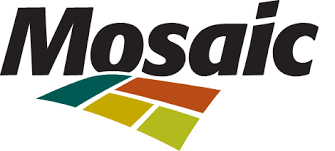 Navigating Cancer Immunotherapy Competition.webp)
Explore Merck & Co., Inc. (NYSE: MRK)'s strategies amid rising cancer therapy competition and its prudent debt management for sustained market leadership.
Market Analysis of Merck & Co., Inc. (NYSE: MRK)
Overview of Keytruda and Competitive Landscape
Merck & Co., Inc. (NYSE: MRK) continues to lead the cancer immunotherapy market with its flagship drug, Keytruda. Keytruda achieved remarkable sales of $25 billion last year, reinforcing its dominance. However, emerging competitors in the oncology space are beginning to pose challenges. A notable example is the biotechnology firm's drug, ivonescimab, which recently reported impressive results in a late-stage study for advanced non-small cell lung cancer (NSCLC). Ivonescimab extended the median time to cancer recurrence to 11.1 months, surpassing Keytruda’s 5.8 months.
Despite this promising data, there are limitations that temper the immediate threat to Keytruda’s market position. The trial data was sourced from China, and global trial results will be essential for broader market approval, including in the U.S. Additionally, Keytruda boasts extensive clinical data across various cancers, a comprehensive therapeutic profile that ivonescimab currently lacks. Moreover, ivonescimab’s study did not measure overall survival, a crucial metric in evaluating treatment efficacy.
Investors should be mindful that Keytruda’s patent is approaching expiration in the coming years. Merck & Co., Inc. will need to strategize on how to offset potential revenue declines from Keytruda’s patent expiration by investing in new therapies and innovative treatments.
New Developments in Merck’s Portfolio
Beyond Keytruda, Merck & Co., Inc. is expanding its portfolio with new treatments. Recently, the company received approval for WINREVAIR® (sotatercept) in Canada, designed for pulmonary arterial hypertension (PAH). Sotatercept, an activin signaling inhibitor, introduces a novel approach by balancing vascular proliferation. The approval in Canada highlights Merck’s commitment to diversifying its therapeutic offerings.
The STELLAR study, involving 323 PAH patients, assessed sotatercept's effectiveness compared to a placebo alongside existing therapies. The positive results position sotatercept as a promising new option for PAH management, demonstrating Merck's ongoing efforts to address unmet medical needs.
In addition, Merck & Co., Inc. is advancing its pipeline with the IDeate-Lung01 phase 2 trial of ifinatamab deruxtecan. This potential first-in-class antibody-drug conjugate targets B7-H3 for extensive-stage small cell lung cancer (ES-SCLC). Preliminary findings indicate an objective response rate of 54.8% with the 12 mg/kg dose, offering a potential new treatment for a patient population with limited options.
Market Sentiment and Regional Impacts
The competitive landscape and Merck’s evolving portfolio reflect broader market trends. The pharmaceutical and biotechnology sectors are witnessing a surge in innovative therapies aimed at various cancers and chronic conditions. This intensification of competition, especially in oncology, is prompting companies like Merck to diversify their portfolios and explore new therapeutic areas.
Regional factors, such as regulatory environments and clinical trial outcomes, play a critical role in the approval and market introduction of new drugs. For instance, ivonescimab's data from China underscores the importance of global trial results for broader market acceptance.
The evolving landscape underscores the importance of continuous innovation and strategic adaptation for maintaining a competitive edge. Companies must navigate regulatory hurdles and adapt to shifting market dynamics to ensure long-term growth.
Debt Management and Financial Health of Merck & Co., Inc. (NYSE: MRK)
Debt management is crucial in assessing a company’s financial health and risk profile. While market volatility is often discussed, excessive debt can pose significant risks to a company's stability. This analysis evaluates how Merck & Co., Inc. manages its debt and its implications for financial health.
Debt can be beneficial if it supports growth and expansion. However, problems arise if a company struggles to meet debt obligations, potentially leading to shareholder dilution or bankruptcy. Effective debt management involves analyzing both the total debt and the company’s ability to handle it.
As of mid-2024, Merck & Co., Inc. reported total debt of approximately $37.8 billion, consistent with the previous year. The company holds $11.4 billion in cash, resulting in a net debt of about $26.4 billion. Merck’s liabilities include $26.1 billion due within the next 12 months and $42.9 billion due beyond 12 months. Considering its liquid assets and short-term receivables, Merck has a net liability of $44.7 billion.
Despite these figures, Merck’s substantial market capitalization of $298.7 billion suggests that its debt levels are manageable. The company’s debt-to-EBITDA ratio stands at 1.1 times, and its interest coverage ratio indicates that EBIT covers interest expenses by a factor of 20.7 times, reflecting manageable debt relative to earnings.
Examining cash flow is also essential in understanding debt management. Over the past three years, Merck generated free cash flow equivalent to 65% of its EBIT, a robust rate for the industry. This strong cash flow provides Merck with the flexibility to reduce debt as needed, mitigating financial risk.
Author's Analysis
Merck & Co., Inc. (NYSE: MRK) faces increasing competition, particularly from emerging therapies like ivonescimab. Nonetheless, its diversified pipeline and strategic advancements in areas such as pulmonary arterial hypertension and small cell lung cancer demonstrate the company’s resilience and capacity for continued leadership in the pharmaceutical industry. Merck’s effective management of its debt, characterized by strong interest coverage and robust cash flow, further supports its financial health and market position. Balancing the challenges posed by Keytruda’s impending patent expiration with new growth opportunities will be crucial for sustaining its competitive edge and overall market performance.
Disclaimer:
The information provided in this article is for educational purposes only and should not be construed as investment advice. estima...
Author
The Editorial Team at estimatedstocks.com is a dedicated group of financial market analysts, researchers, and writers committed to providing accurate, timely, and insightful content for investors and financial enthusiasts. With a deep understanding of global markets, macroeconomic trends, and investment strategies, the team at estimatedstocks.com ensures that readers are well-informed to make smart financial decisions. Our editorial team specializes in analyzing stock performance, market trends, and economic indicators, offering expert commentary and in-depth reports on the ever-evolving world of finance. We aim to bridge the gap between complex financial data and practical investment insights, making the markets accessible to everyone—from seasoned investors to those just starting their financial journey. At estimatedstocks.com, our content is driven by thorough research, critical analysis, and a commitment to delivering objective, fact-based reports. Whether it’s stock market forecasts, company earnings reviews, or sector-specific deep dives, the Editorial Team is focused on helping our audience navigate the financial landscape with confidence. Our mission is to empower investors by providing them with the tools and knowledge to make informed decisions in an unpredictable market.


